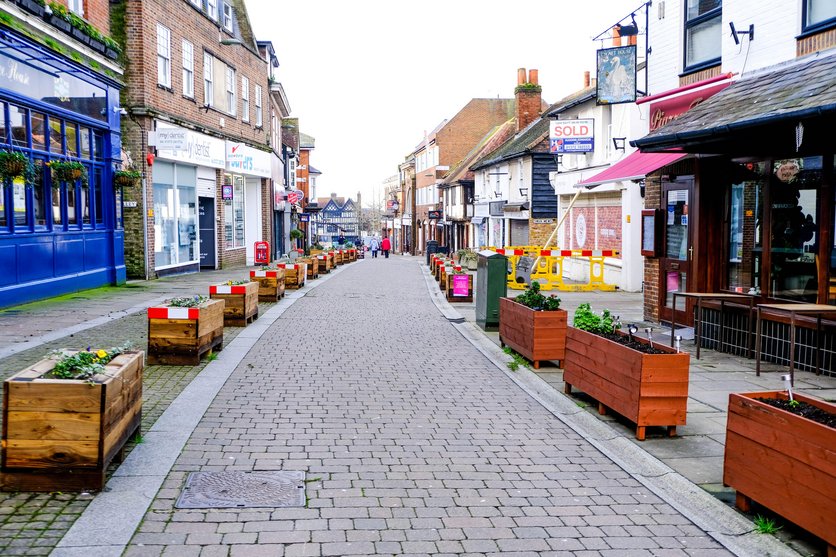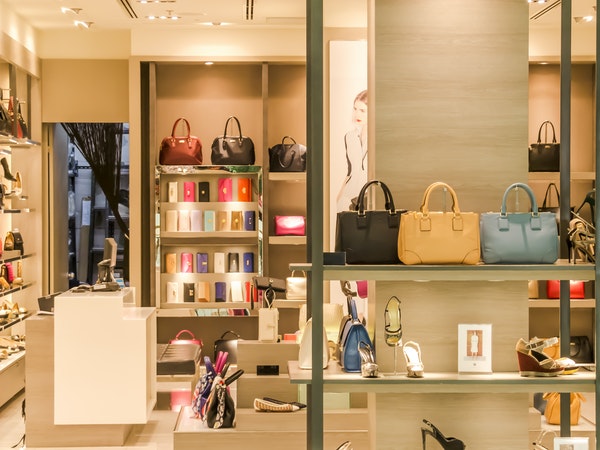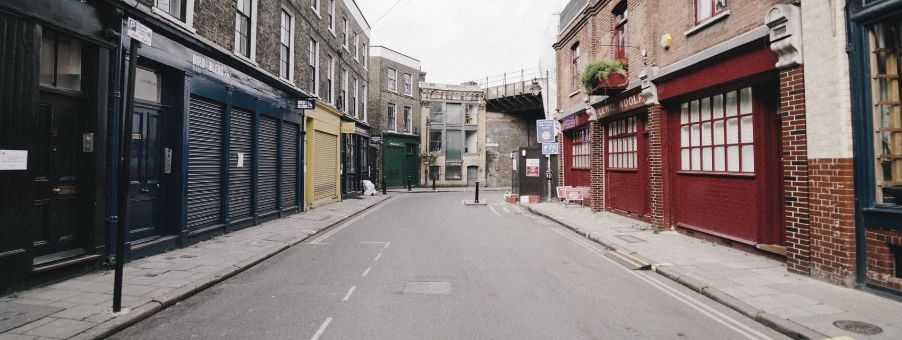In the current climate, a trip to the high street is not what it once was. The vast majority of stores are closed due to ongoing restrictions. Only essential shops such as Poundland and B&M Bargains remain open. There are more pigeons than people. You half expect a tumbleweed to drift by.
It is sad and bleak, but things will get better. Millions in the UK have already been vaccinated, and it is expected that non-essential shops in England and Wales will reopen on 12th April. Although many people are struggling financially, millions of home-workers have saved thousands of pounds in the last year, money that would have normally been spent on fares, car parking, canteen lunches, and after-work drinks.
There is money waiting to be spent, and means that there is a pent-up demand from eager consumers who are desperate to go shopping. It is currently so convenient for them to turn to online shopping, so major changes are required to get people to shop locally instead of automatically filling their online shopping baskets.
This article explores various solutions that could help revive our high streets by attracting consumers out of their homes again and back into brick-and-mortar shops.
A Dire Situation
The global pandemic and government restrictions have seriously affected the UK’s high streets, which, in turn, has increased the power of the online giants. For example, Boohoo snapped up Debenhams, and bought Dorothy Perkins, Wallis, and Burton from the failed Arcadia group, while ASOS purchased Topshop. However, they didn’t acquire the physical stores of the brands they bought, leading to the permanent closure of hundreds of shops and the loss of thousands of jobs.
COVID has exacerbated the high street’s woes, but the problems it is facing have been a long time in the making. In more than three-quarters of local authorities in the UK, high street retail jobs fell between 2015 and 2018. The main cause of this decline is e-commerce, which explains how Boohoo and Asos were able to swoop in and buy those struggling brands. In 2020, COVID made the situation much worse. Government-mandated lockdowns served as a catalyst for the retail industry’s near-complete shift to digital. Online sales are predicted to grow to £4.7 trillion by 2022, up from £2.5 trillion in 2019.
The high street situation doesn’t look good right now, but there are ways in which it can be revitalised. It will be impossible for high streets to go back to the way they were, because consumer behaviour and needs are have changed and what high streets once stood for is no longer appropriate in the modern age. They will still have an important role in our towns and cities, but the changes require innovation and dedication to transform them into something new.
High Streets Need to Embrace Omnichannel Retail
As it stands, the current high street offerings will never be able to compete with online retailers. Consumers have come to expect cheaper prices, huge product selections, and quick doorstep deliveries. E-commerce has completely transformed the retail industry in terms of speedy service and convenience. How can the high street be expected to rival this fierce competition?
The answer is simple. E-commerce and high streets could work in tandem. In order for high streets to remain relevant and become profitable again, they need to do something different. There is an abundance of vacant stores, and there are bound to be many more before the pandemic is over. Online retailers could play a huge role in reviving these abandoned spaces by turning them into showrooms for their brands, where people can view, touch and feel goods and pick up orders that they have previously paid for online.
This would bring people together again whilst at the same delivering a convenient omnichannel retail experience. It would draw people into the town centres and increase the success of upselling opportunities, whilst also giving customers the benefit of talking to retail experts face-to-face. It would be like traditional shopping, but with a twist.
It is expected that some stores will become windows to inventory that’s held online, because when stock can be seen and sold online, there’s no use using a store as a glorified warehouse. It is so much more convenient for the customer. Imagine a couple of friends who have met in town for a coffee. They stroll past shop windows and one of them spots something they like. Instead of the inconvenience of purchasing it at that moment and then having to transport it home themselves, they can buy it using the retailer’s app or website and have it delivered to their home. The joys of traditional shopping, but without having to haul bags full of stuff around town.
For the retailer, the result will be that the shop floor will shrink, and the focus will shift to engaging customers in a way that is harder to replicate via a screen. Injecting more theatre and excitement into high street stores will increase their appeal to a wider range of customers.

A New Approach for a Compassionate Generation
Conventional retailers who continue to operate in this new world will need to provide an experience that customers can’t get online or on their smartphones. A new era of retail is upon us, and the days of stacking stuff high and selling it quickly are gone. There’s a new generation who aren’t going to support retail giants who don’t prioritise people or the environment.
Sustainability, innovation, and standing for something worthwhile are crucial to building brand loyalty among younger people who demand that the companies they shop with show social responsibility. This will be evident in what survives on the high streets, where the most successful businesses will offer a mix of retail, entertainment, culture, and wellbeing. For example, it is likely that there will be fewer shops selling tangible products, and instead a stronger focus on outlets that provide an experience, for example escape rooms, restaurants, and beauty salons.
It is interesting to note that huge multinationals such as Google and American Express have launched campaigns urging people to shop locally and support small businesses, which shows where the experts think the future of retail is headed.
Despite what some may think, there will always be a place for brick-and-mortar stores, as well as pop-up stores and boutiques. They can survive and indeed thrive if they provide something that goes beyond the transactional. Whether that’s unbeatable customer service that cannot be replicated via the websites of online retailers, expert knowledge, the chance to try out a product, or providing a space where local people can get together.
COVID has fuelled a social and economic movement that has shadowed the past decade. There has been a major examination of how human beings want to live. People value ethical businesses as much as price and convenience. Deeper, more meaningful connections to the local retailers who serve the place where you live will become far more valued than a trip to a soulless out-of-town retail park.
USPs the Internet can’t Compete with
For High Streets to remain relevant to consumers, they need to promote their universal selling points that highlight their strengths when compared to e-commerce. First-class, face-to-face customer service will always be better than the online equivalent, so ensuring that stores are staffed with retail experts who not only know their stuff, but make customers feel valued, is a must. Some retailers have launched online video chat services, but we are social creatures, and we will always prefer the face-to-face option. Injecting more theatre and excitement into high street stores will increase their appeal to a wider range of customers.
Another way that high street stores can increase footfall, and thus increase sales, is by providing extra services. For example, a clothes shop could launch an alterations service, or an electronics store could contain a repair facility. High street retailers have something that the online giants don’t have: a physical space that doesn’t have to be used just for transactions. All it takes is a bit of imagination and outside-the-box thinking, and they could come up with something that benefits the community and is impossible to replicate online.

Commercial to Residential
Perhaps the biggest change we can expect to see over the next few years is high streets becoming more residential; due to new rules that came into effect in September. Commercial properties can now be converted into homes without planning permission. This will breathe new life into empty premises that currently don’t have a purpose, and new homes are something the country needs. It will also bring more people into town centres and reinforce the sense of local community that will be fundamental in keeping the high streets alive.
Rebirth of the High Street
There is far too much nostalgia and not enough optimism about the future of the British High Street. People lament what once was but fail to realise what amazing places high streets could be once again. They’ll never be what they used to be; the pandemic has accelerated huge shifts in the way people shop, shifts that were already bubbling away under the surface for years.
Companies and the government will have to wake up and innovate to ensure their survival. We shouldn’t be looking at the empty stores and writing high streets off as something that belongs in the past. They have so much potential to be reborn as something better and modern that works alongside the online retailers to appease our omnichannel desires, and create a real sense of local community and togetherness.
RMS are a leading merchandising company who specialise in managing retail transformation projects. Find out how we can help you improve your customer experience and increase sales.
